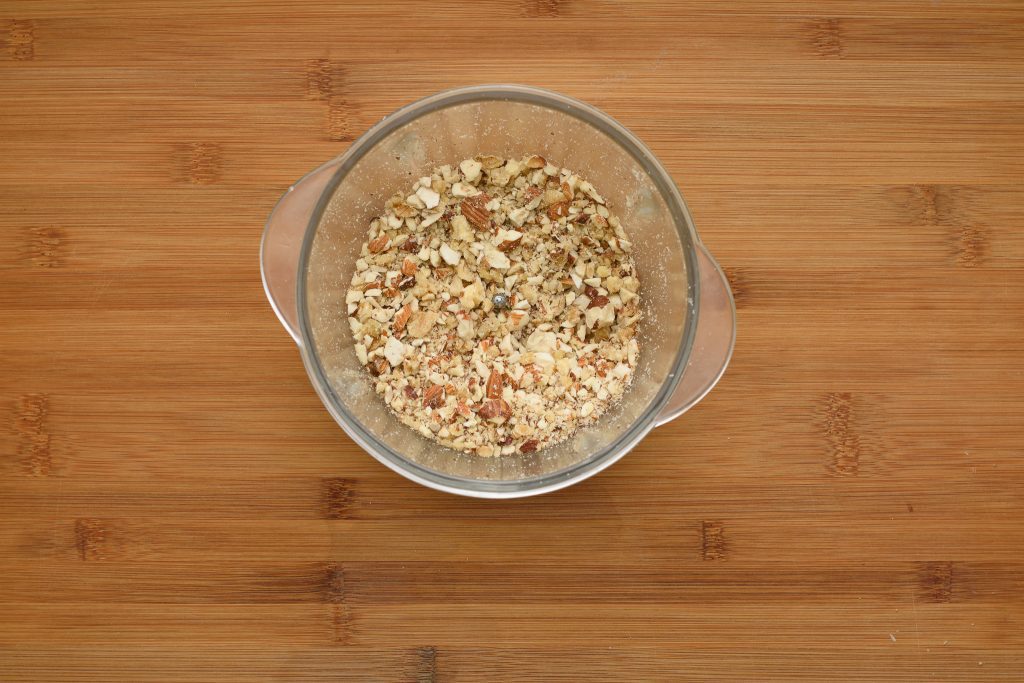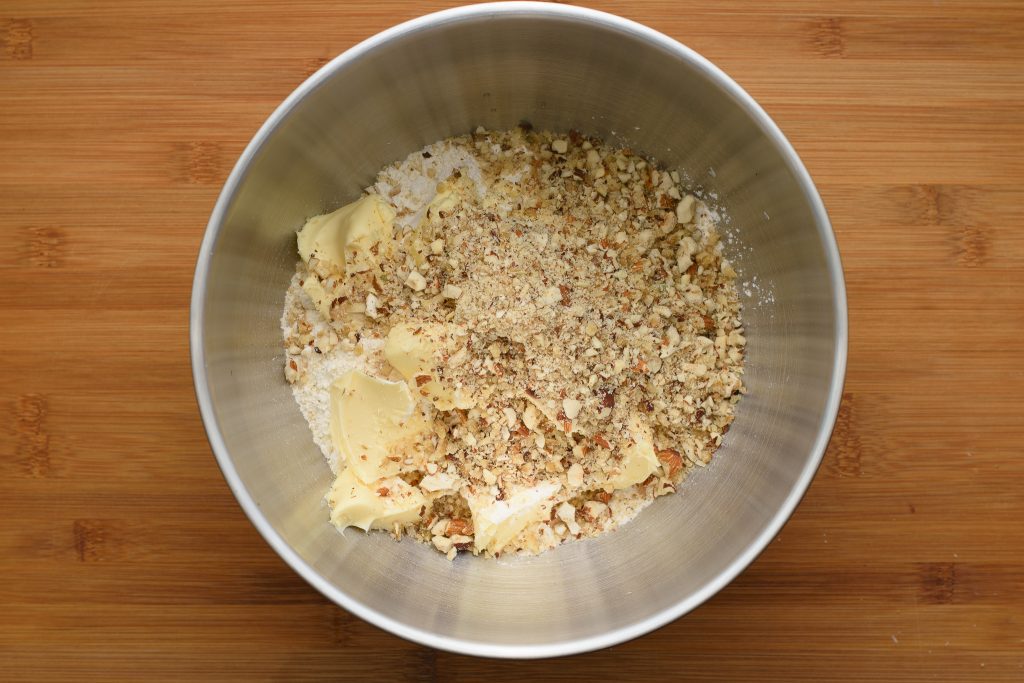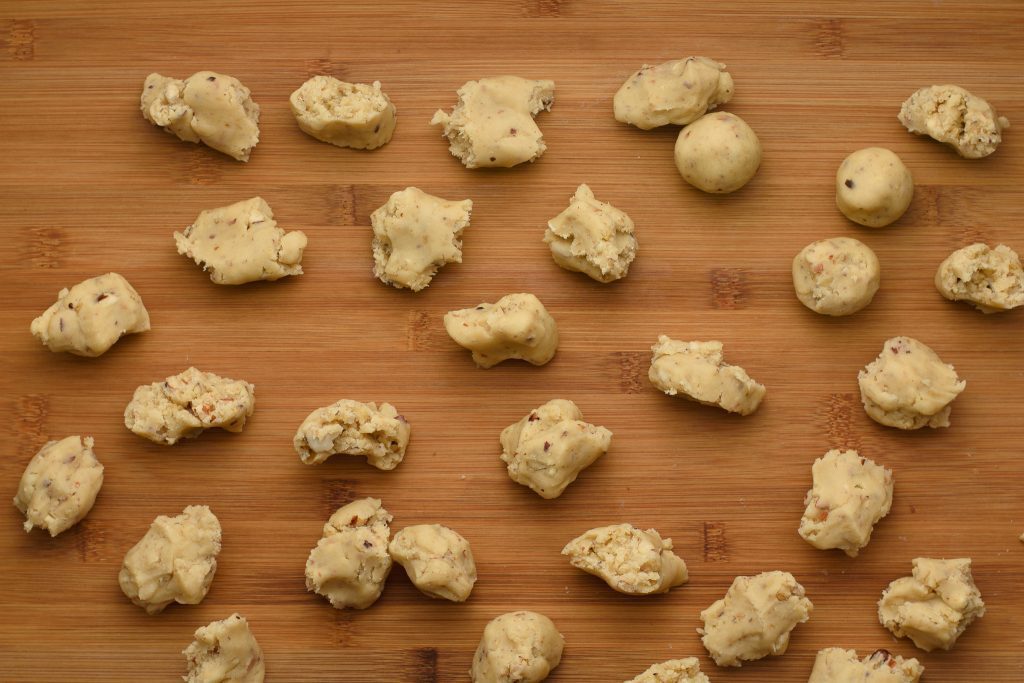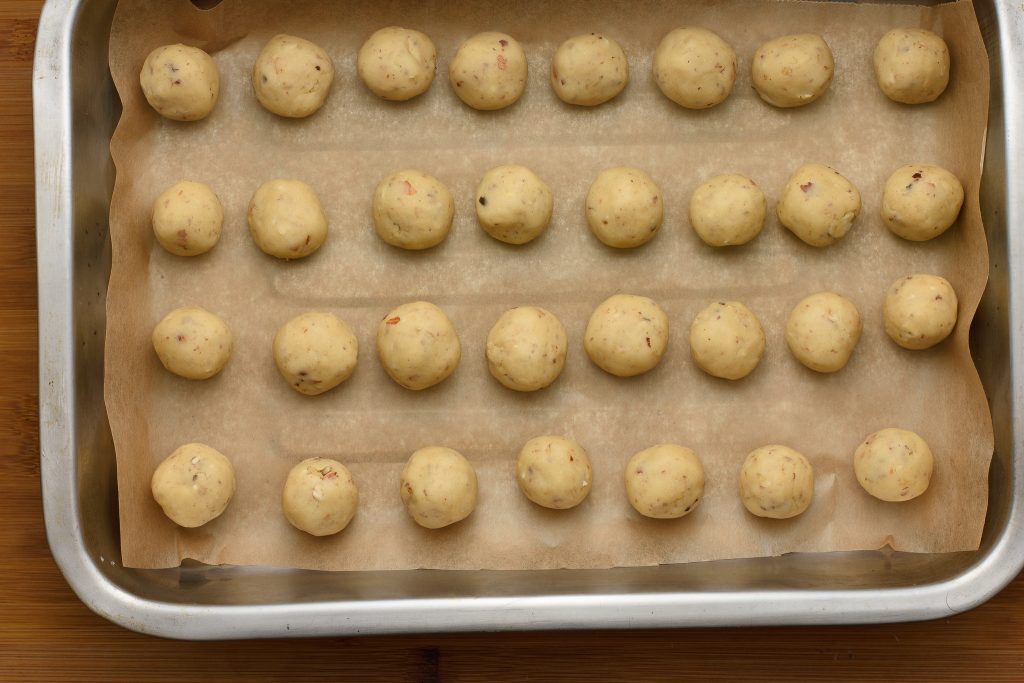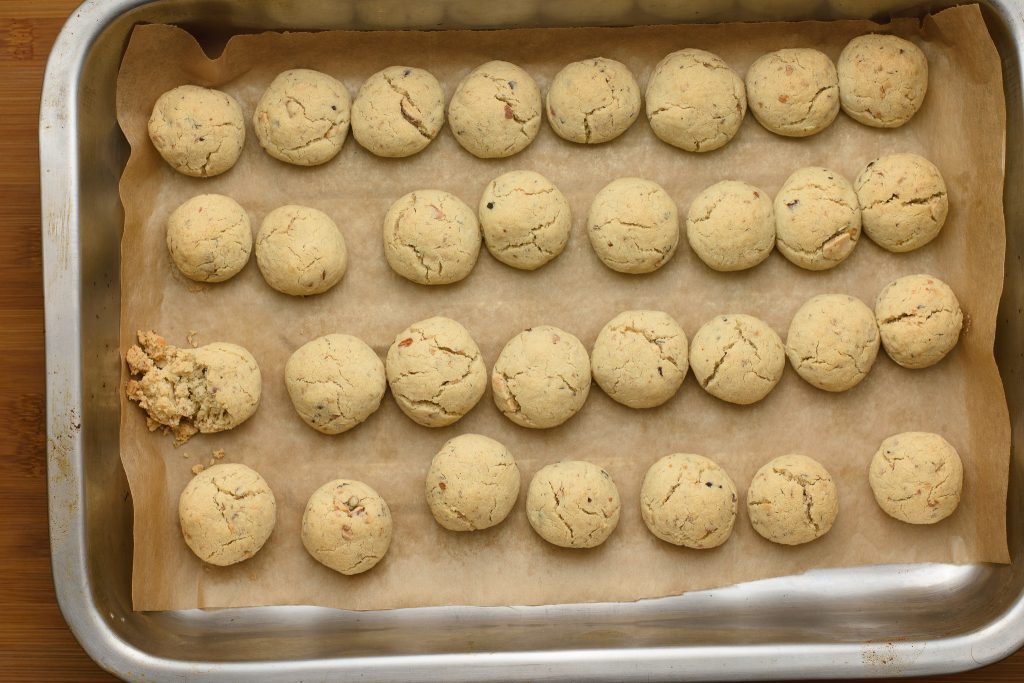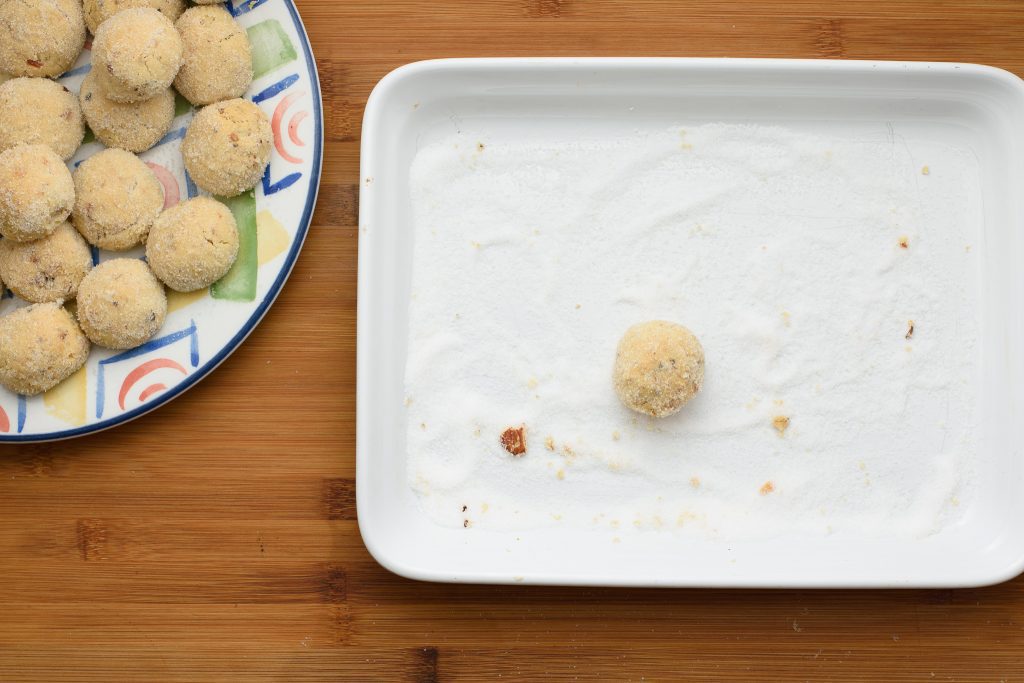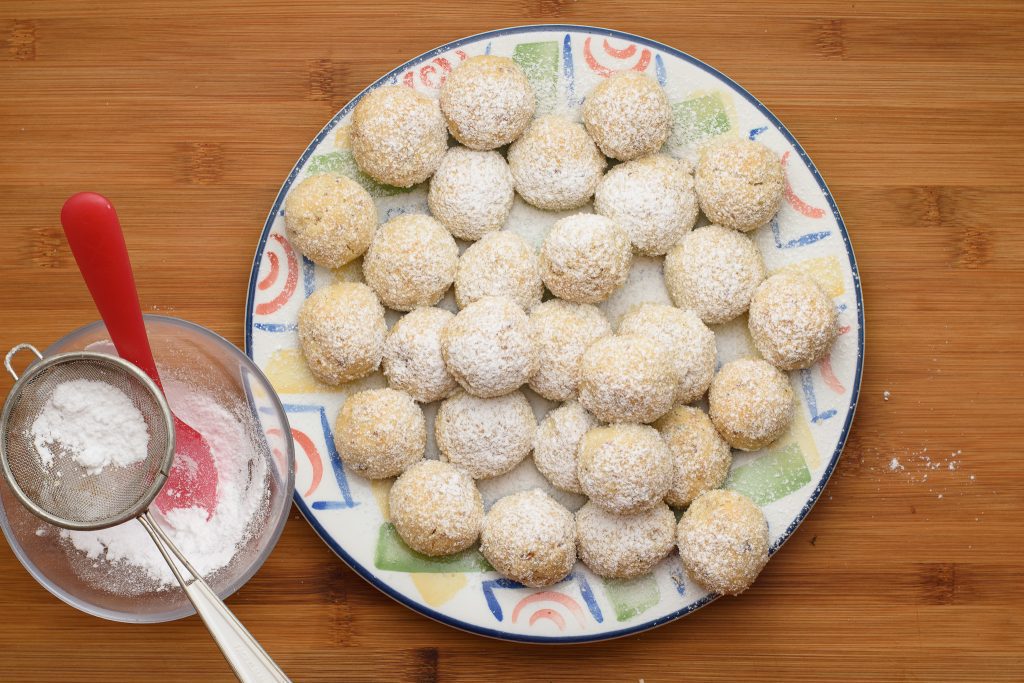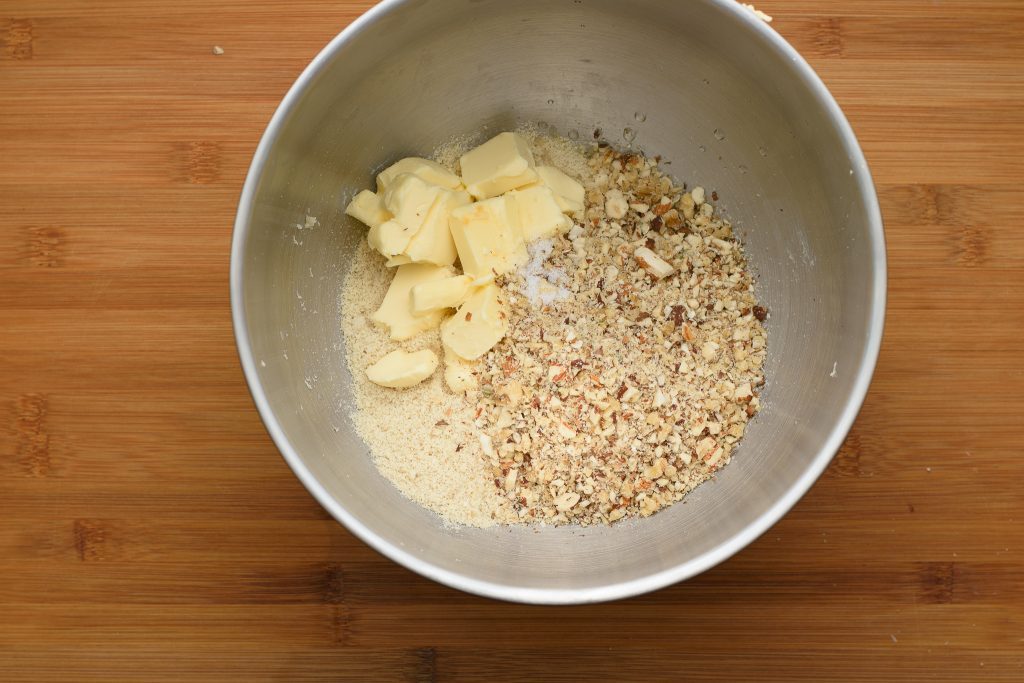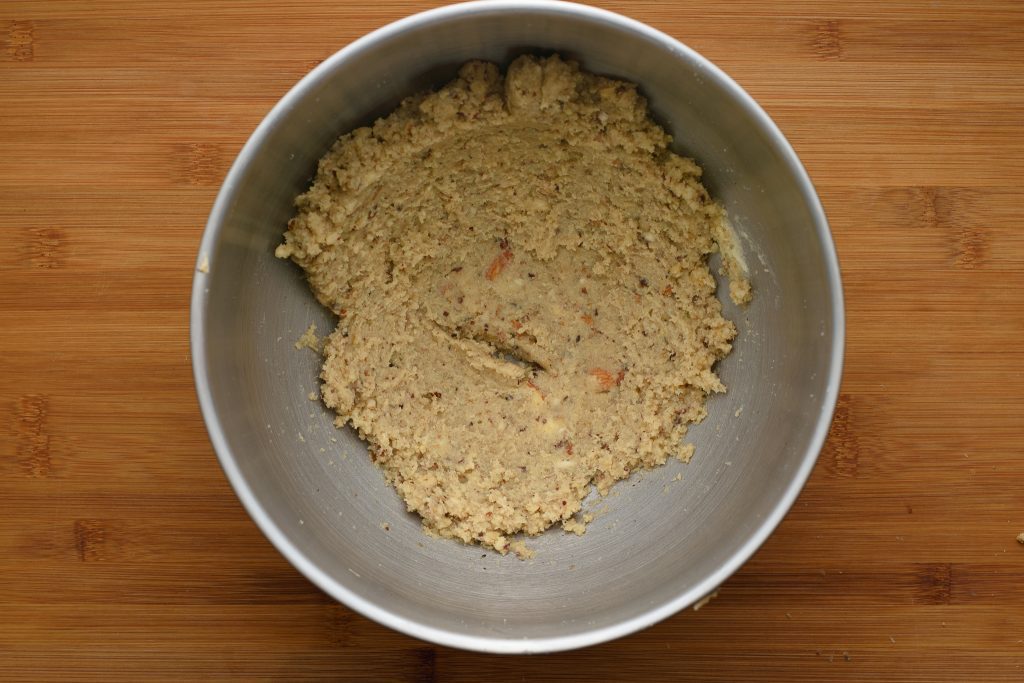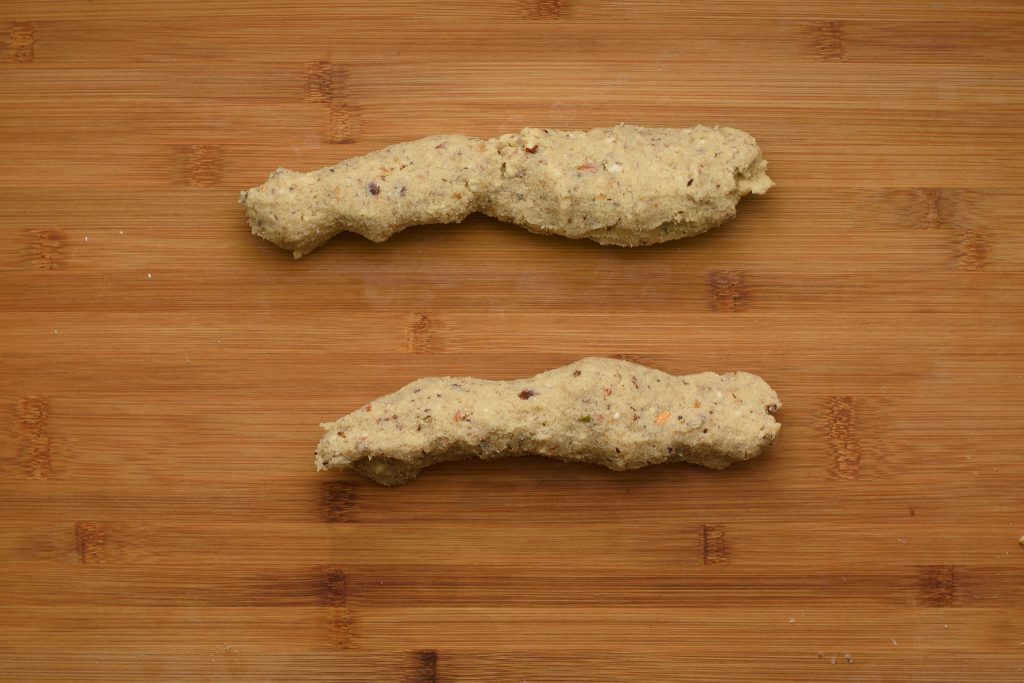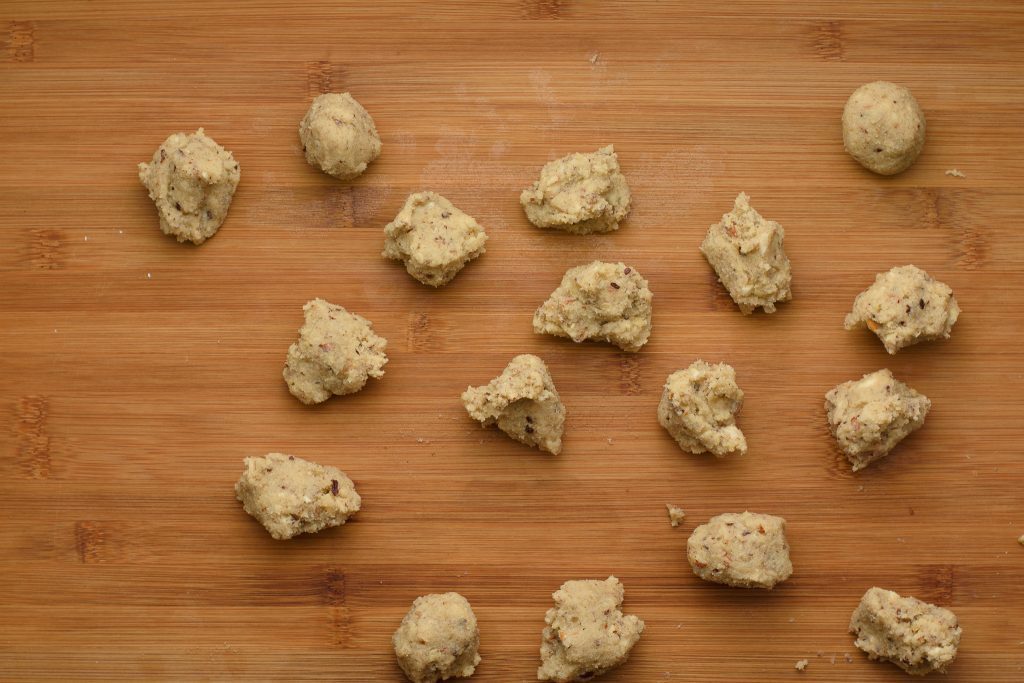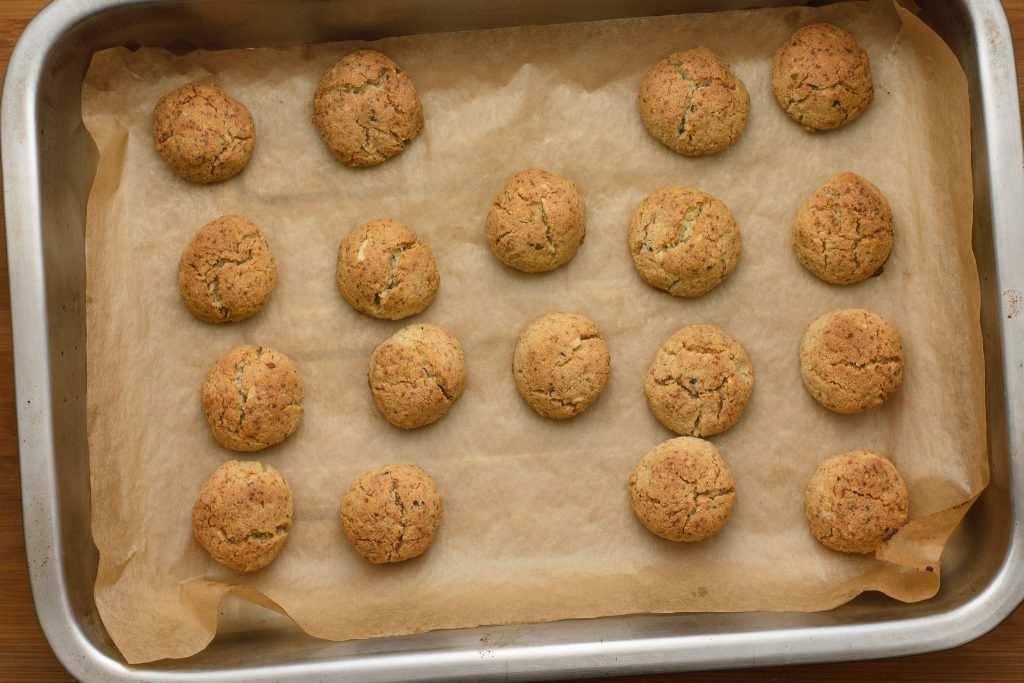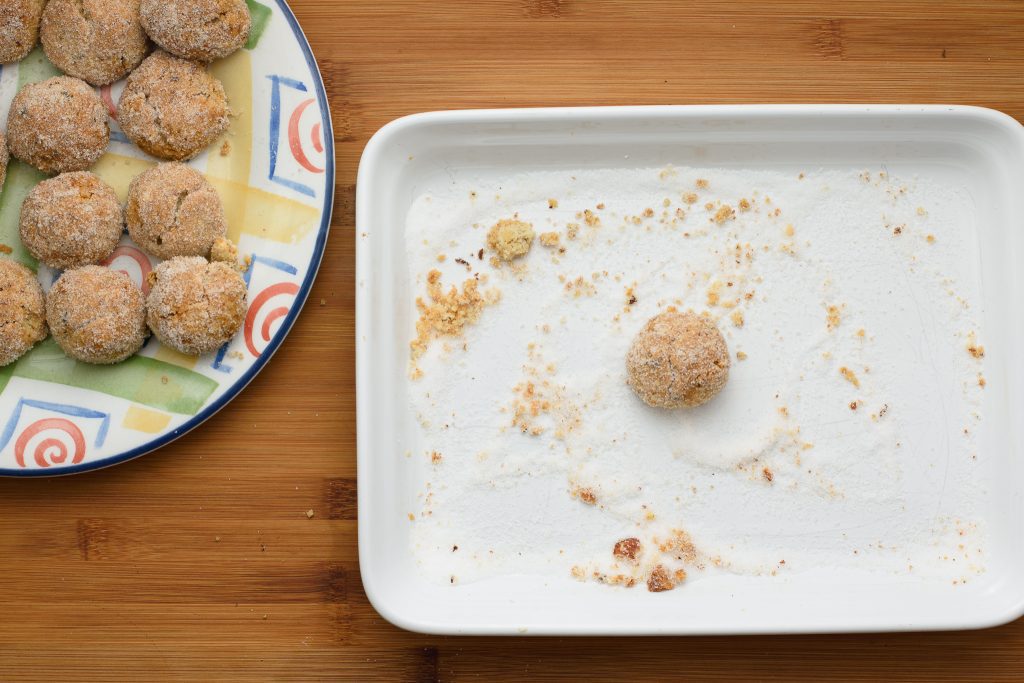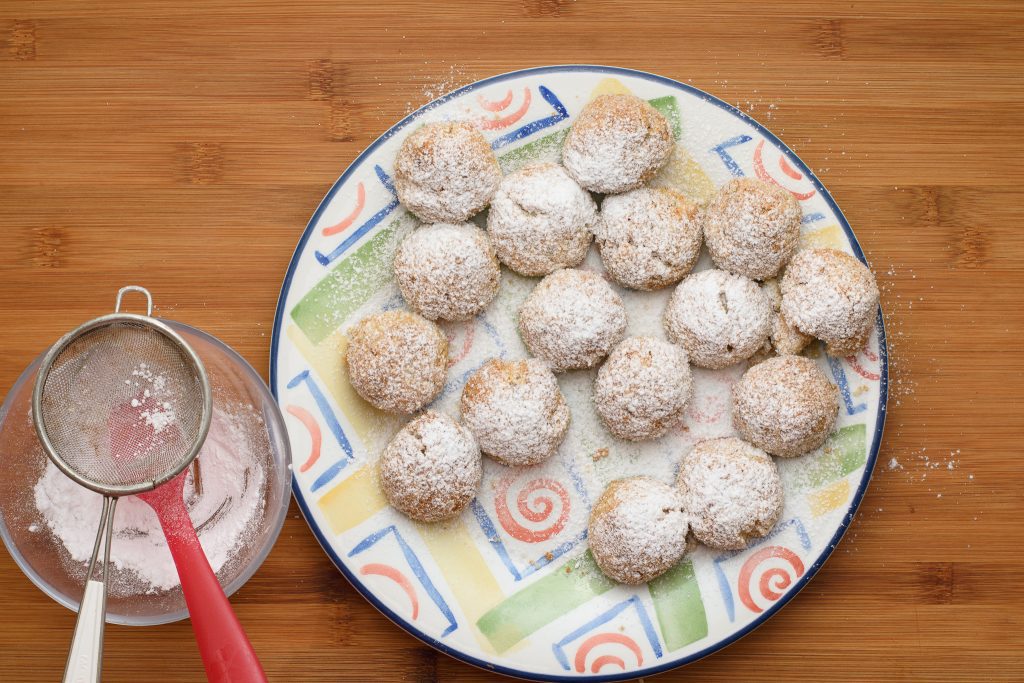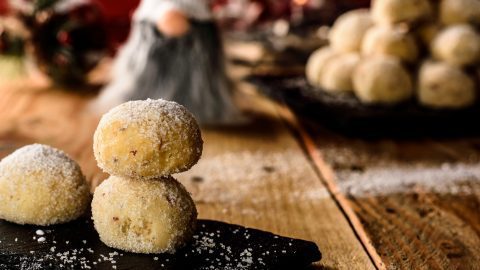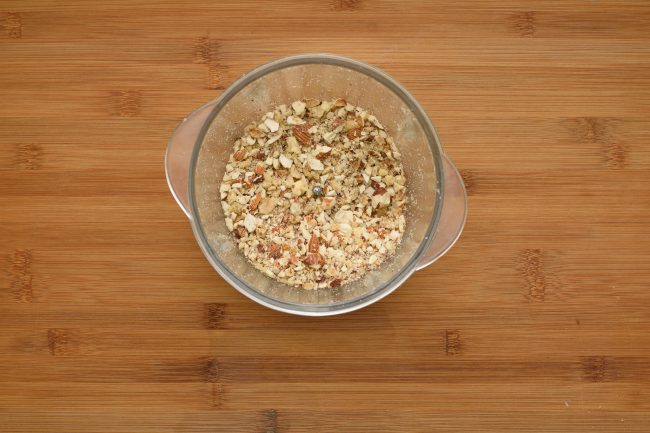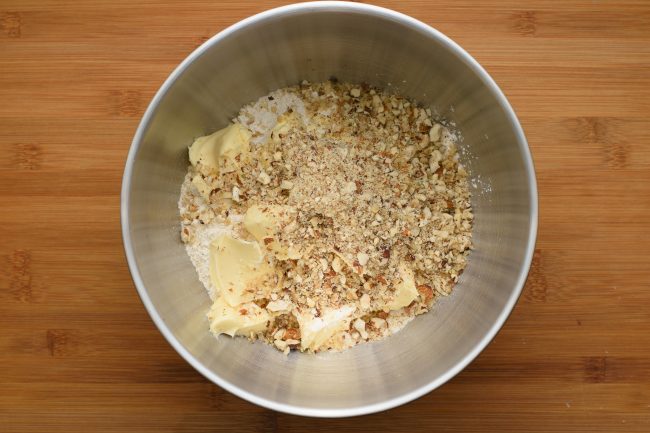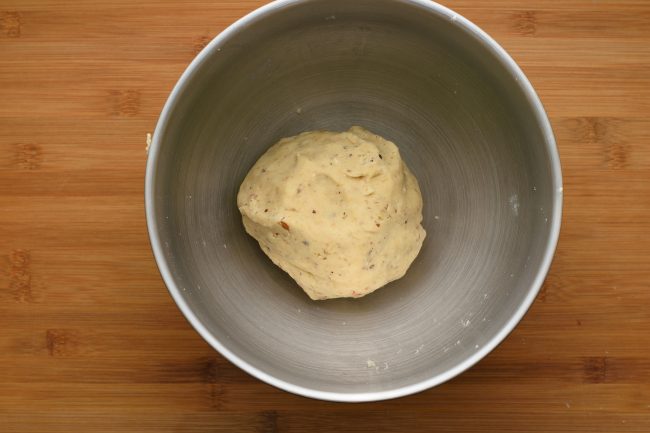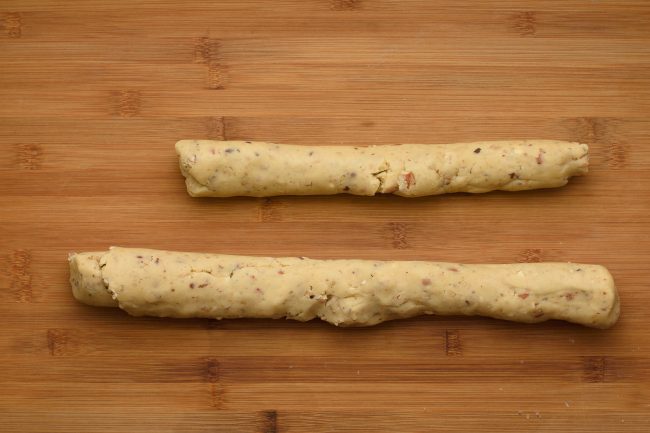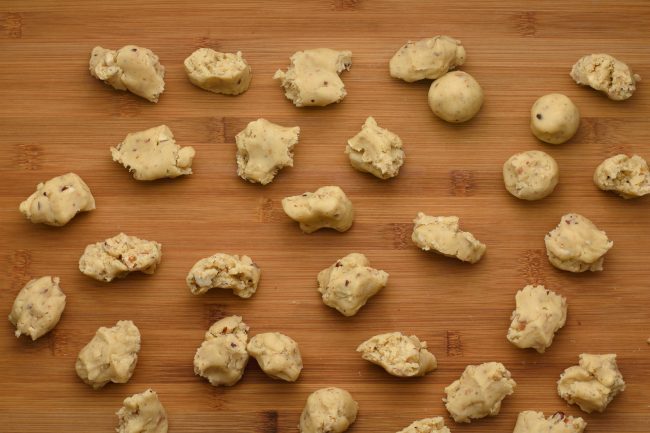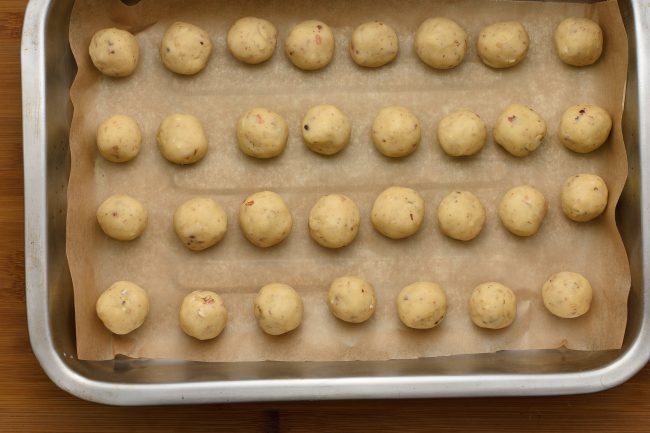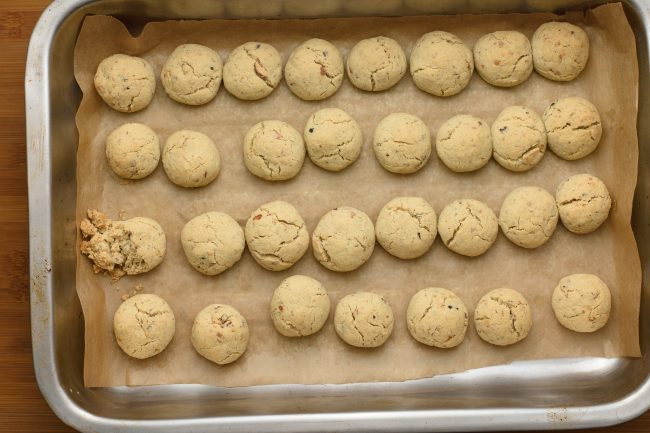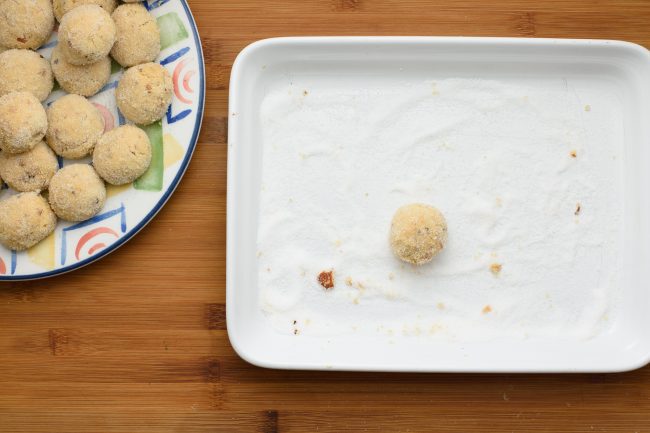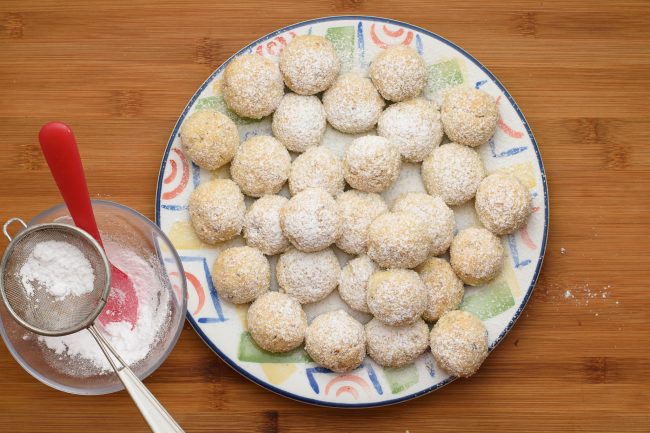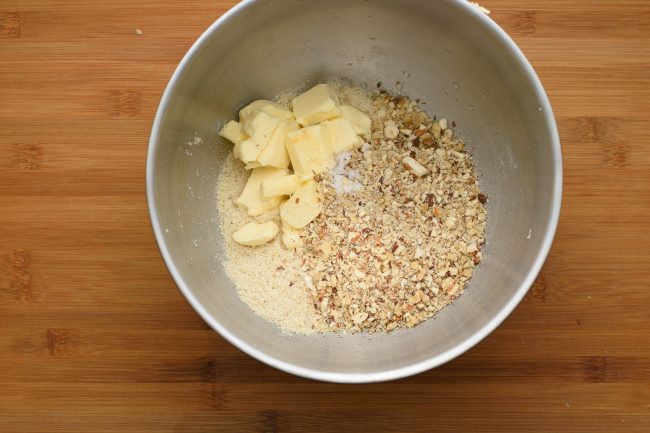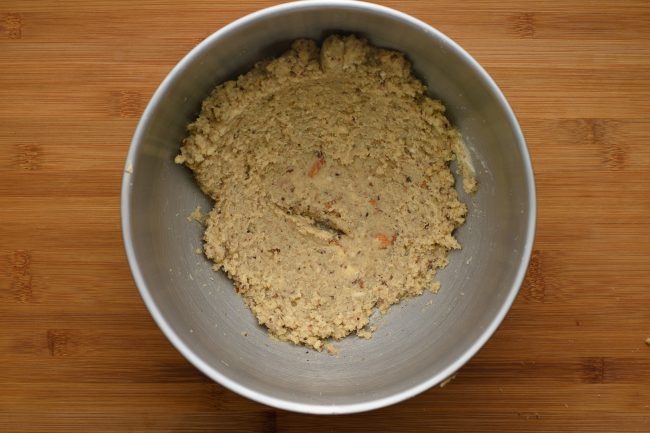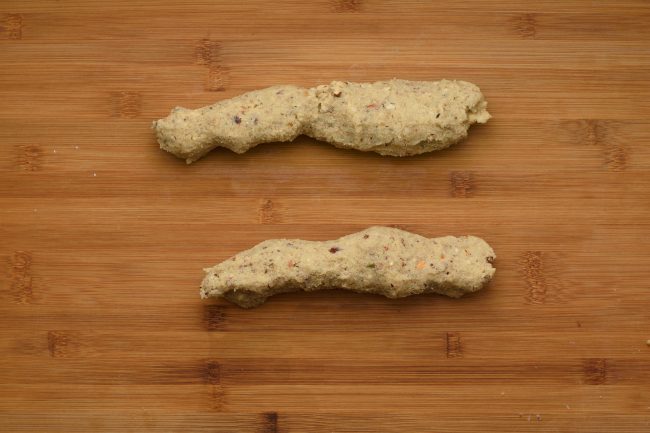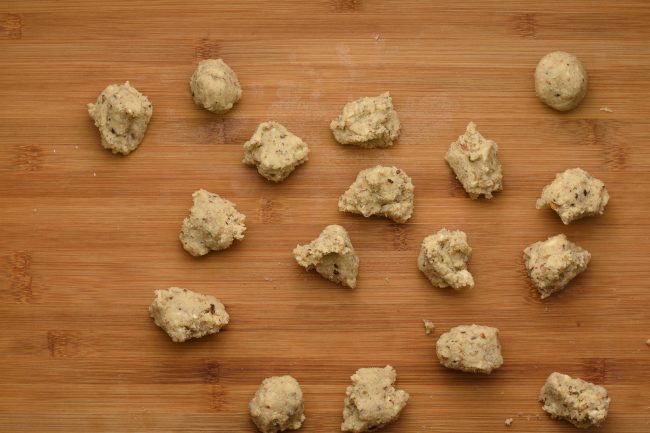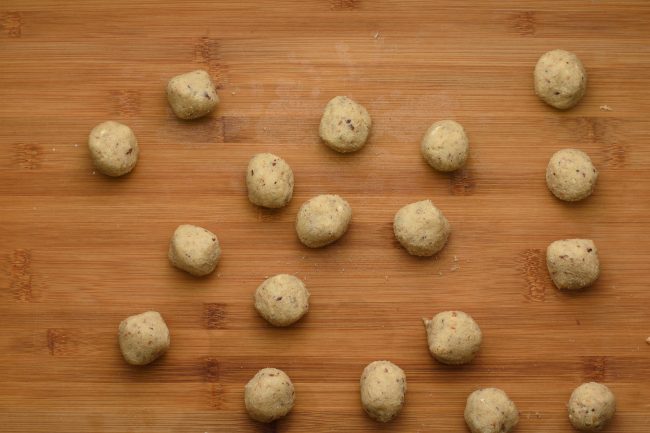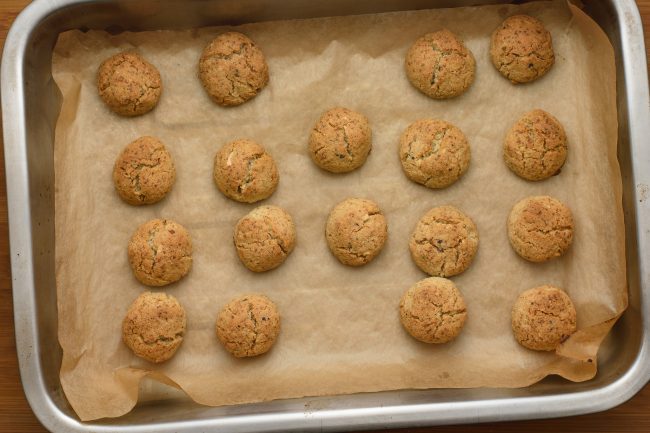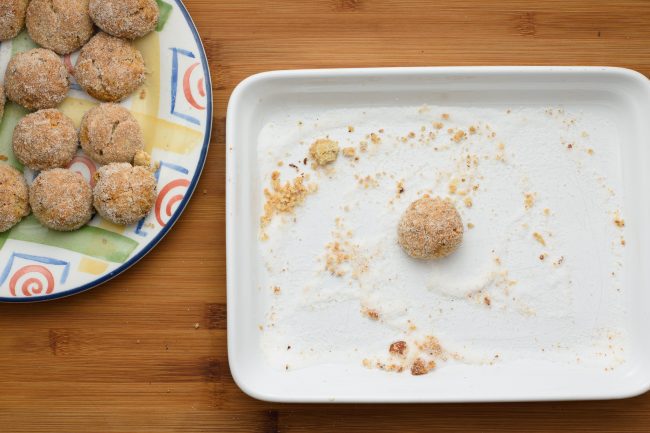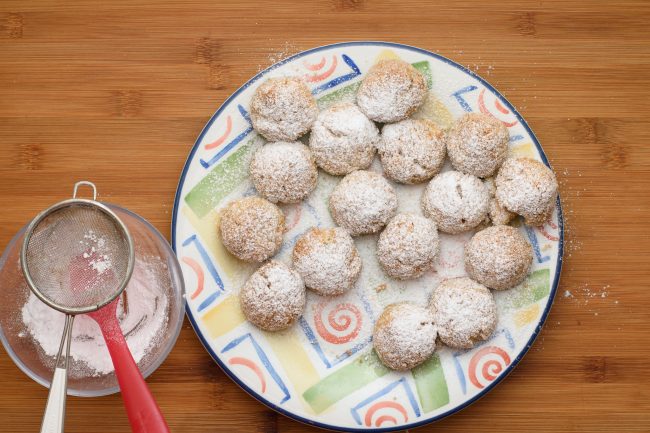Do we choose our names or the name chooses us? Let’s make some Russian Tea Cake and see if it was happier with another one!
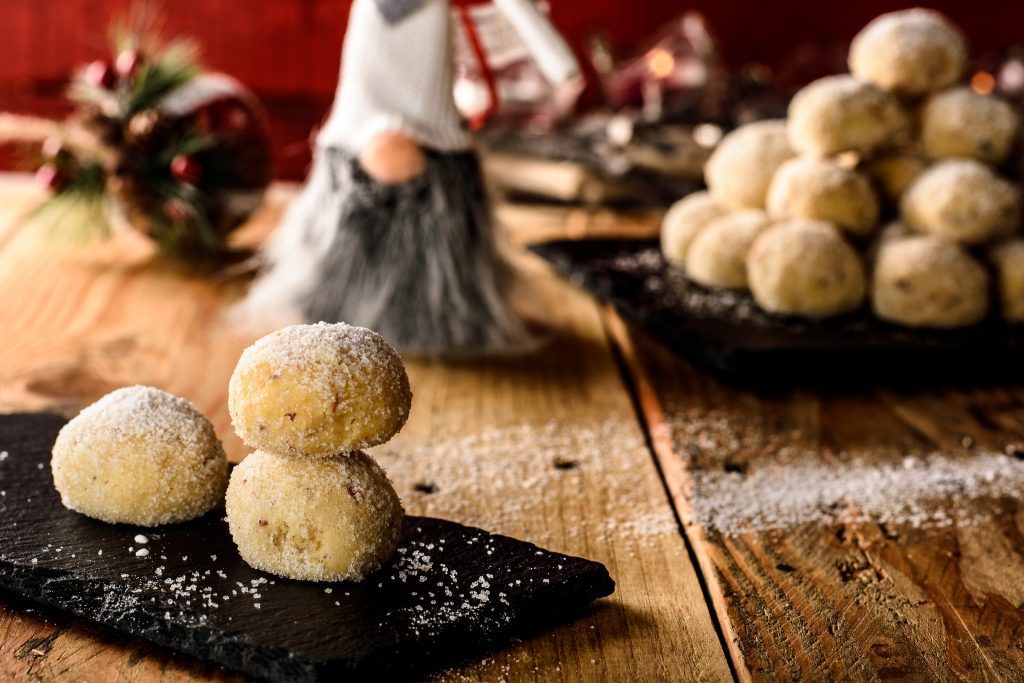
Russian tea cakes can join the club of recipes that has nothing to do with their names. Russian tea cakes are much closer to cookies given their individually formed bite sized ball shape, sparse ingredients list and lack of preparation technique.
Although Russians do like tea and has a great tea drinking tradition with sweets, cookies or whatever at hand, they don’t particularly have this kind of thing piled up next to their samovars.
Where do Russian tea cakes come from?
So Russian tea cakes aren’t cakes and aren’t Russian. We could still have them with our cup of tea though, except we don’t as we have them for Christmas. Others, like Mexicans have them for weddings and call them wedding cakes or cookies which might make more sense since they have them at weddings, not for tea.
Russian tea cakes aren’t completely taken out of thin air though. There are legends about European nuns who migrated to Mexico, bringing the knowledge with them to create these little sweets to make the harshness of life bearable in the new world.
The closest sibling this cake has, can still be found in Europe today. In Spain, they call it Polvorones which loosely translates to “dust” as the cakes crumble away by the lightest of touch and melts away on our tongue, bringing heaven to Earth.
What’s Russian in tea cakes?
There are rumors that the cakes may have been served while enjoying tea from Russian tea kettles, called samovars.
Samovars are very interesting type of kitchen equipment, at least by modern standards. They were designed to house a mini furnace in the middle, to heat up the surrounding water without the need of using large amount of fuel or any kind of cooktop.
Once the water was hot enough, it was poured out through a built-in tap, allowing the brewing process to begin in a tea pot. Engineering marvels allowed the tea pot to sit on top of the samovar, blocking the escape of smoke and keeping the tea hot longer.
Cakes from such samovar tea parties must have seeped into the collective knowledge of humanity and stuck there as Russian tea cakes.
What are Russian tea cakes made of?
The main ingredients of Russian tea cakes are flour, water, butter and ground nuts. In reality, not the cookies itself but rather their appearance that provide the distinctive characteristics associated with Russian tea cakes.
Traditionally, the cookies are coated in confectioner’s sugar not only once but twice. First time when they are fresh out of the oven the balls are rolled into confectioners’ sugar. Once they are cooled down a second layer of white powdered sugar is drizzled over them, giving them a white coat.
This second layer of whiteness must be the reason why we like to make them during the Christmas festive season and the sweet sugary coat is why we make them at any time besides Christmas.
Low carb version of the Russian tea cake is fairly easy to make. Once we skip the usual high carbs ingredients like the flour and sugar what remains is butter and nuts. Substituting the sugar with our favorite low carb sweetener shouldn’t be so hard and using nut flour in the place of the white flour is equally easy.

The best thing is that it doesn’t matter which type we’ll make under the coat of white powder, all cakes not just looks but tastes equally sweet.
Ingredients
Traditional
- ¾ cup / 100g Chopped nuts (Walnut, almond, hazelnut, pecans…)
- 2¼ cups / 300g Flour
- 1 cup / 200g Butter (room temperature)
- 1½ cups / 200g Powdered sweetener of choice (dived into two)
- 2 teaspoon / 10ml Vanilla extract
- ½ teaspoon / 2g Salt
Gluten free – Keto
- 1 cup / 100g Chopped nuts
- 1½ cup / 150g Almond flour
- ½ cup / 100g Butter (room temperature)
- 1½ cups / 200g Powdered sweetener of choice (dived into two)
- 1 teaspoon / 5ml Vanilla extract
- ½ teaspoon / 2g Salt
Note: Russian tea cakes may be too sweet for someone on a sugar free diet. Consider skipping the added sweetener to the dough and use only the sweetness of the dusting.
How to make Russian tea cake
Pro tip
Roast nuts in a 350°F / 180°C oven for 10 – 15 minutes.
Traditional
- Chop the nuts to convenient size. We can use a mixture of nuts or our favorite one.

- Add flour, butter, half of the sweetener, vanilla extract, salt and the chopped nuts into a mixing bowl.

- Knead everything together.

- Roll the dough into a log so it will be easier to measure out similar sized balls.

- Measure out the desired sized balls. We like walnut sized balls that are about 0.7 oz / 20g.

- Roll the dough into balls then place them onto a parchment lined baking tray.

- Place them into a 375°F / 180°C oven until golden brown spots start to appear on them for about 30 minutes. Later they will be a bit more forgiving but now handle them with care.

- Spread the other half of the powdered sweetener on a tray and roll the hot balls into until all sides are covered.

- Sift a bit more powdered sweetener over the cookies then serve.

Enjoy!
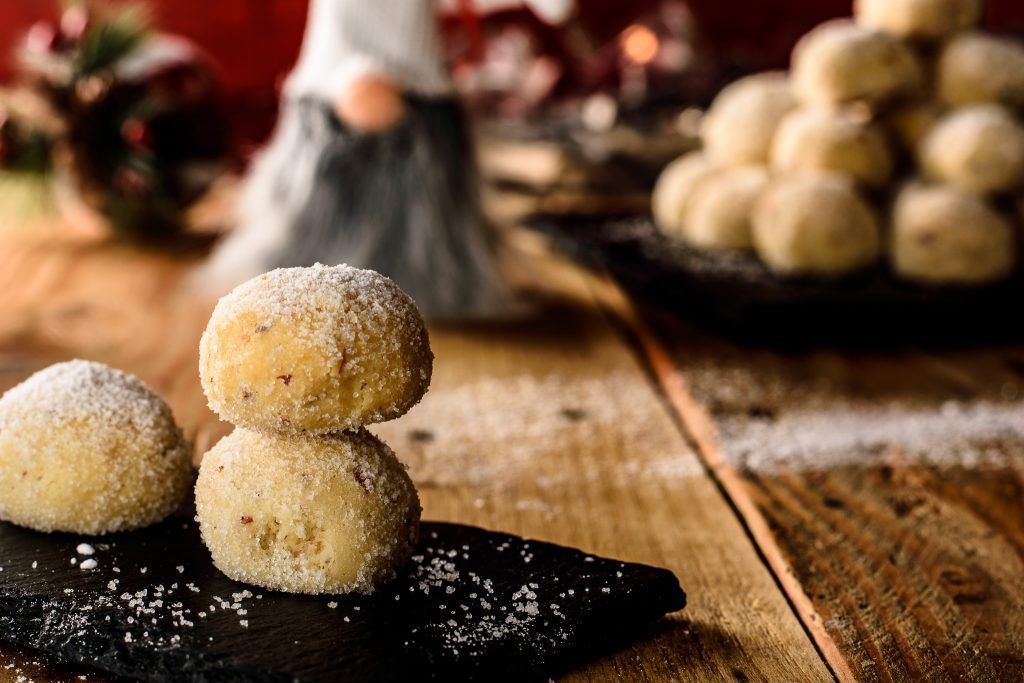
Gluten free – Keto
- Chop the nuts to convenient size. We can use a mixture of nuts or our favorite one.

- Add flour, butter, half of the sweetener, vanilla extract, salt and the chopped nuts into a mixing bowl.

- Knead everything together.

- Roll the dough into a log so it will be easier to measure out similar sized balls.

- Measure out the desired sized balls. We like walnut sized balls that are about 0.7 oz / 20g.

- Roll the dough into balls then place them onto a parchment lined baking tray.

- Place them into a 375°F / 180°C oven until golden brown spots start to appear on them for about 30 minutes. Later they will be a bit more forgiving but now handle them with care.

- Spread the other half of the powdered sweetener on a tray and roll the hot balls into until all sides are covered.

- Sift a bit more powdered sweetener over the cookies then serve.

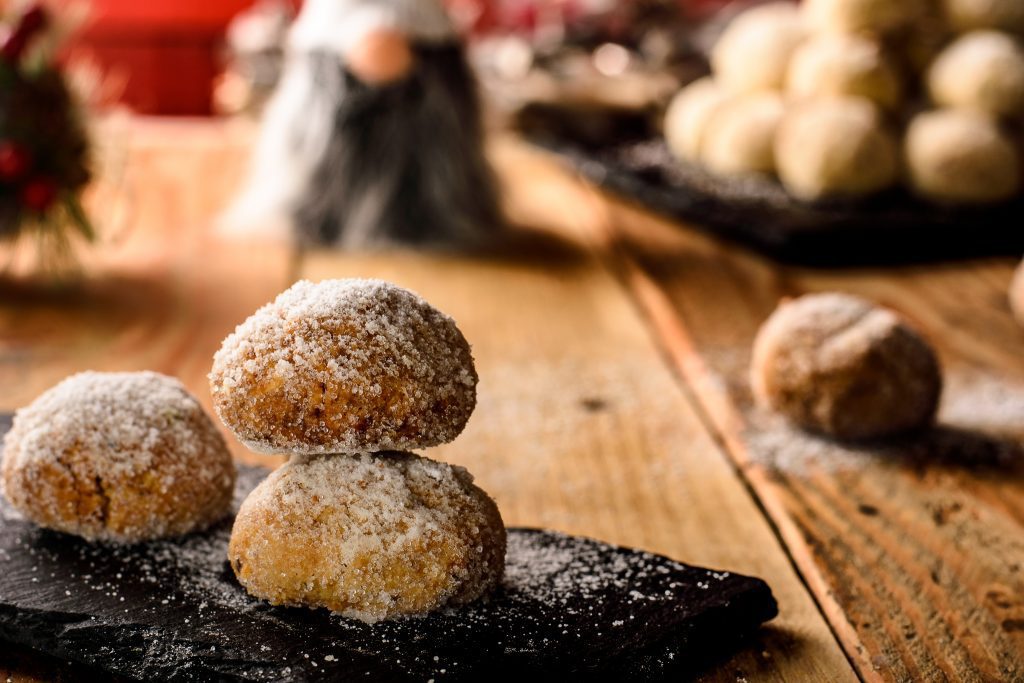
Enjoy!
Russian Tea Cakes Recipe
Ingredients
Traditional
- ¾ cup Chopped nuts Walnut, almond, hazelnut, pecans…
- 2¼ cups Flour
- 1 cup Butter room temperature
- 1 cup Powdered sweetener of choice dived into two
- 2 teaspoon Vanilla extract
- ½ teaspoon Salt
Gluten free – Keto
- ¾ cup Chopped nuts
- 1½ cup Almond flour
- ½ cup Butter room temperature
- 1 cup Powdered sweetener of choice dived into two
- 1 teaspoon Vanilla extract
- ½ teaspoon Salt
Instructions
Pro tip
- Roast nuts in a 350°F / 180°C oven for 10 – 15 minutes.
Traditional
- Chop the nuts to convenient size. We can use a mixture of nuts or our favorite one.

- Add flour, butter, half of the sweetener, vanilla extract, salt and the chopped nuts into a mixing bowl.

- Knead everything together.

- Roll the dough into a log so it will be easier to measure out similar sized balls.

- Measure out the desired sized balls. We like walnut sized balls that are about 0.7 oz / 20g.

- Roll the dough into balls then place them onto a parchment lined baking tray.

- Place them into a 375°F / 180°C oven until golden brown spots start to appear on them for about 30 minutes. Later they will be a bit more forgiving but now handle them with care.

- Spread the other half of the powdered sweetener on a tray and roll the hot balls into until all sides are covered.

- Sift a bit more powdered sweetener over the cookies then serve.

Gluten free – Keto
- Chop the nuts to convenient size. We can use a mixture of nuts or our favorite one.

- Add flour, butter, half of the sweetener, vanilla extract, salt and the chopped nuts into a mixing bowl.

- Knead everything together.

- Roll the dough into a log so it will be easier to measure out similar sized balls.

- Measure out the desired sized balls. We like walnut sized balls that are about 0.7 oz / 20g.

- Roll the dough into balls then place them onto a parchment lined baking tray.

- Place them into a 375°F / 180°C oven until golden brown spots start to appear on them for about 30 minutes. Later they will be a bit more forgiving but now handle them with care.

- Spread the other half of the powdered sweetener on a tray and roll the hot balls into until all sides are covered.

- Sift a bit more powdered sweetener over the cookies then serve.

Notes
Nutrition
Pin now, Enjoy later!
Traditional

Gluten free – Keto

